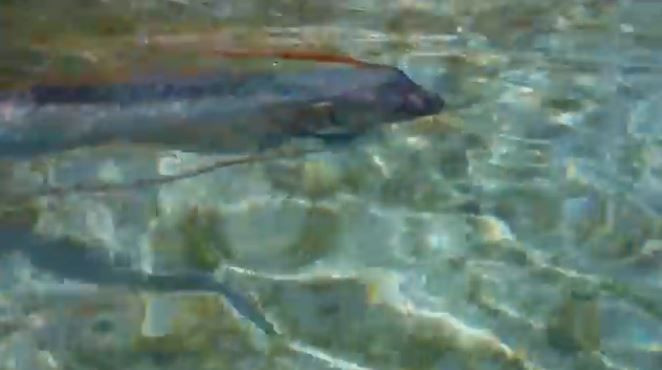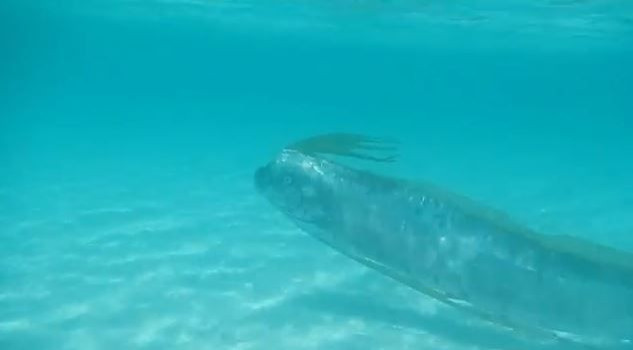
The oarfish, whose scientific name is Regalecus glesne, has rarely been recorded since the fish lays low somewhere between 650 feet and 3,000 feet under the waves and as such, it is identified and studied from drawings, the few videos taken, and dead specimens. But a new video from March 2014 features two 15-foot oarfish swimming around the shallow waters of Mexico’s Sea of Cortés. According to PopSci, the video (which can be viewed in the end of the article) was taken by people who were on a trip organized by Chicago's Shedd Aquarium.
Here are six interesting facts about the oarfish:
1. First described in 1772, the oarfish is believed to be the "sea serpents" that are described in old tales. That said, oarfish are no danger to people. The fish is also called the "king of herrings" since they have a physical resemblance to the small fish. The term oarfish was given to the fish because its long pectoral fins resembles oars.
2. The oarfish is the world’s longest bony fish and can grow up to 56 feet (17 meters) long and weigh up to 600 pounds (270 kilograms). They are the prey of large oceanic carnivores and consume plankton, tiny shrimp, jellyfish, and crustaceans. Oarfish do not have any real teeth; instead, they have gill rakers which are flimsier version of teeth.
3. A unique characteristic of the oarfish is its dorsal fin, which begin above the small eyes and runs the entire length of the creature's body. According to researchers in New Zealand, the dorsal fin can give off electric shocks when touched.

4. Oarfish are prevalent in the ocean -- they are found in temperate and tropical oceans -- but they are rarely seen because of their natural habitat. They are rarely observed alive, although they occasionally swim into shallow waters when they are dying or injured, or when they are accidentally washed up by strong currents. Sometimes fisherman accidentally pull up an oarfish as bycatch.
5. Curious what an oarfish would taste like? According to the National Oceanic and Atmospheric Administration (NOAA), people have tried consuming them and "their flesh is flabby and gooey." This makes perfect sense since oarfish lack scales--they have tubercules and a silvery exterior made of guanine. Their skin is soft and easily damaged.
6. In Japan, the smaller oarfish are said to signal an upcoming earthquake. Known as the "Messenger from the Sea God's Palace," when oarfish wash up on the shore, it's a sign that an earthquake is on its way. Japan Times has reported that there could be some scientific backing to this belief, as "deep-sea fish living near the sea bottom are more sensitive to the movements of active faults than those near the surface of the sea."
© 2025 Latin Times. All rights reserved. Do not reproduce without permission.




